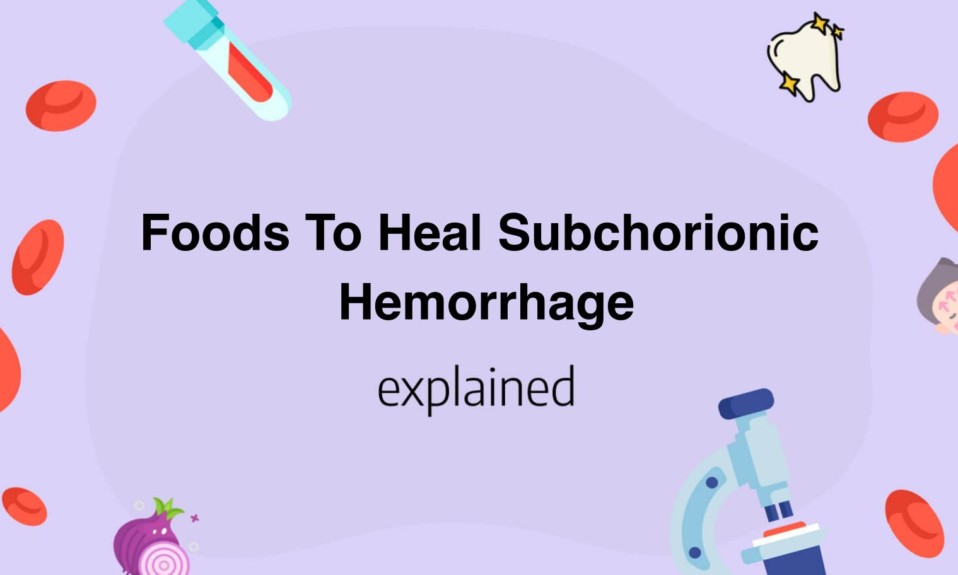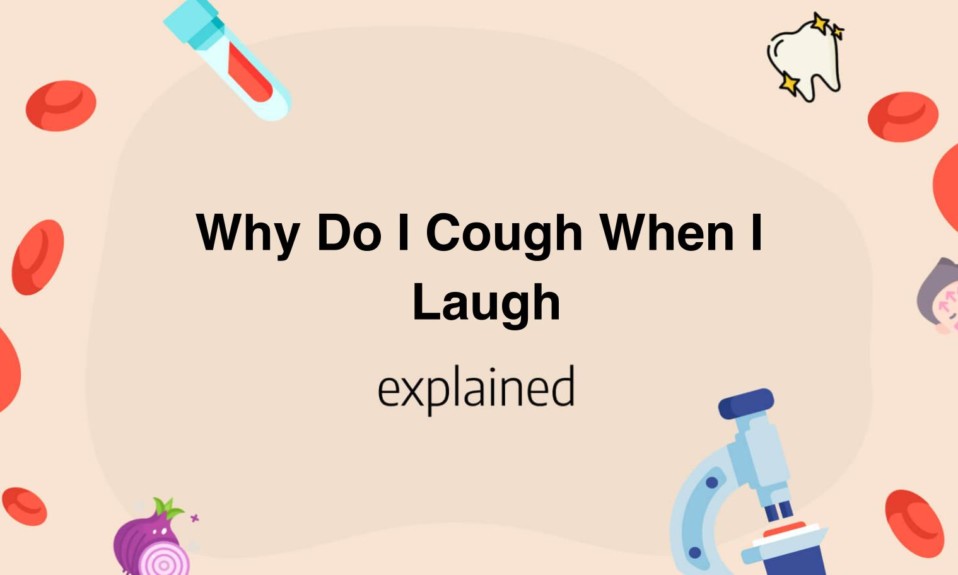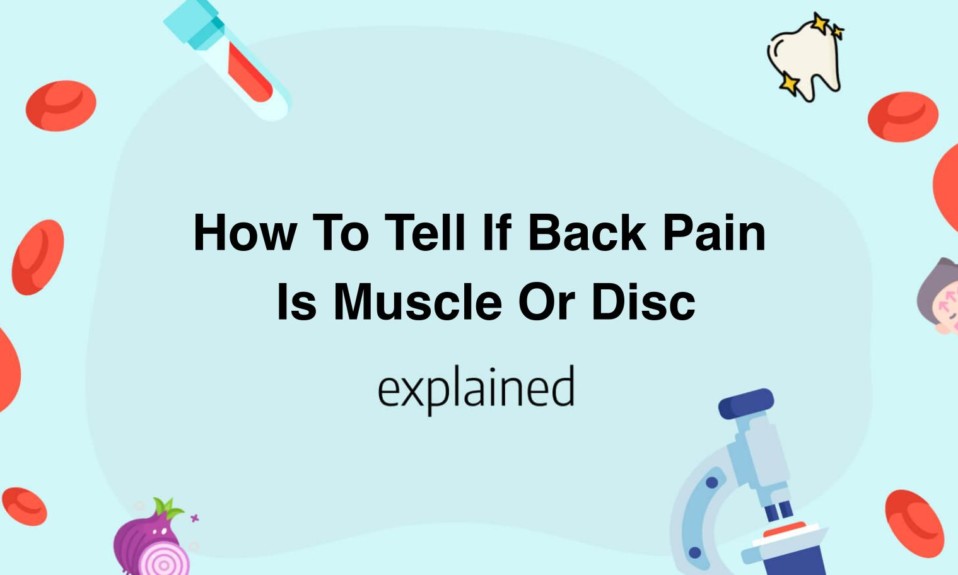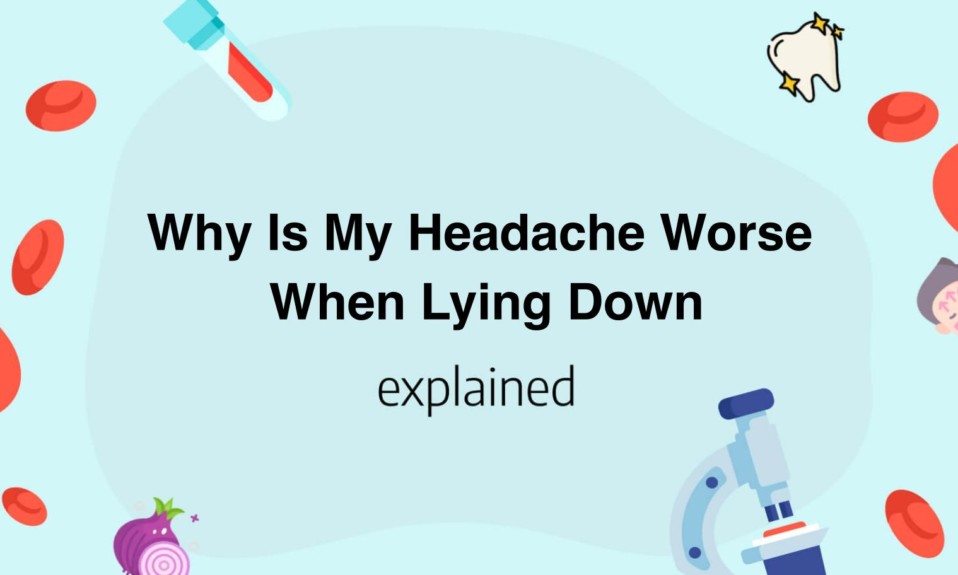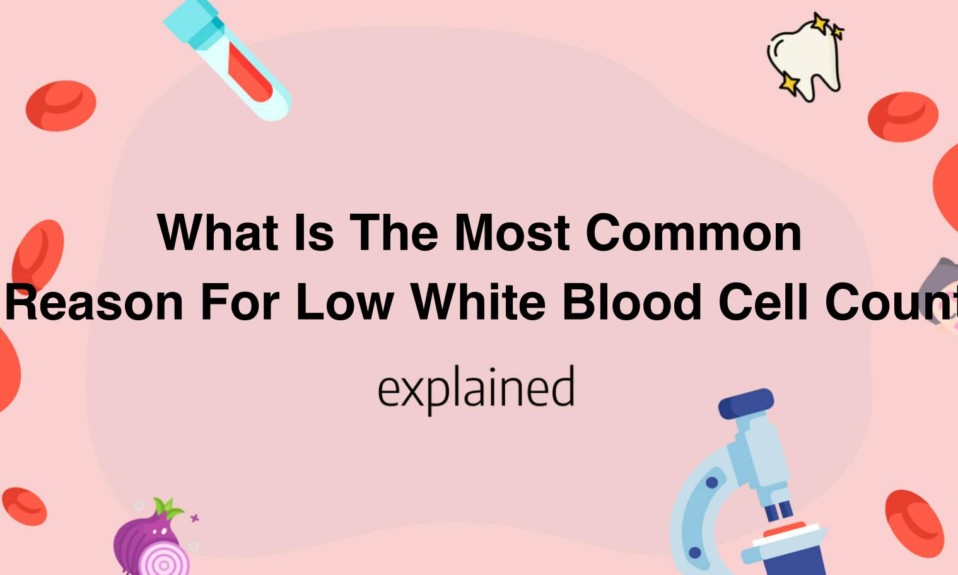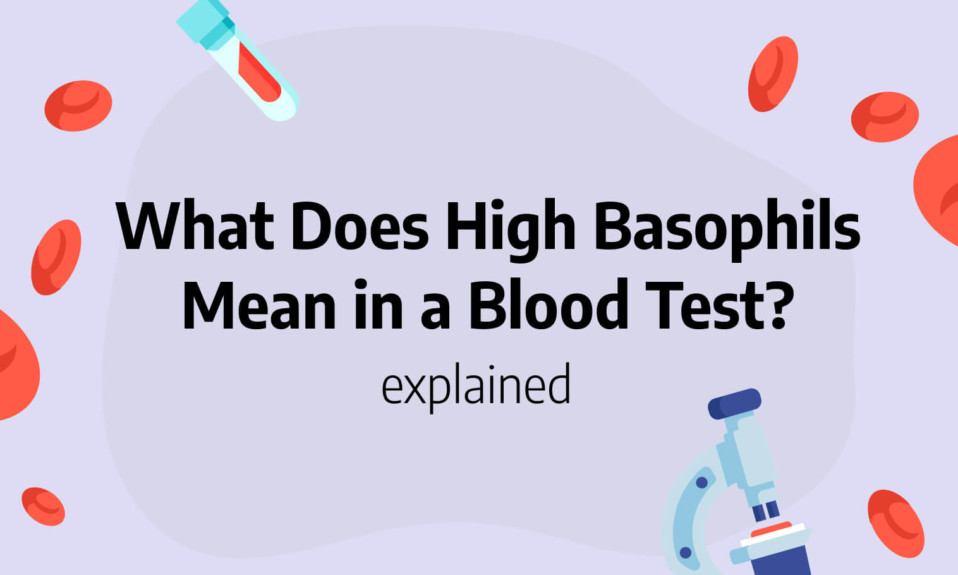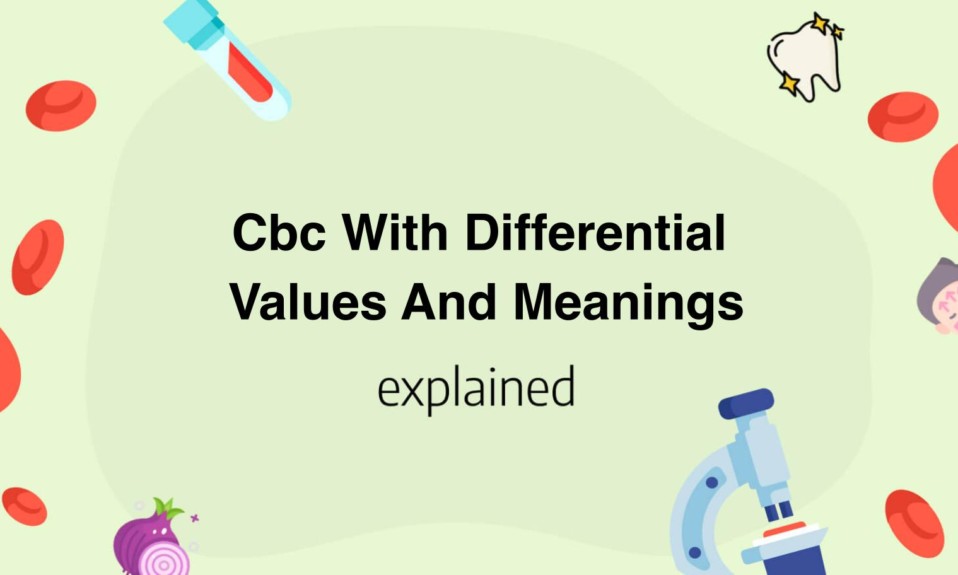For those who have been diagnosed with subchorionic hemorrhage, diet can be an effective way to help the body heal.
Incorporating specific foods into your diet can help improve your overall health, which can aid in faster healing times.
In this article, we will discuss some of the top foods to heal subchorionic hemorrhage and boost your body’s natural healing process.
Whether you are experiencing symptoms or just wish to support your healing efforts, these foods can offer a variety of health benefits.
- Eat foods rich in vitamin C, such as oranges, strawberries, and kiwi, to promote the production of collagen and strengthen the blood vessels within the uterus.
- Include foods high in iron, like spinach, lentils, and tofu, to replenish any blood loss caused by the hemorrhage.
- Incorporate foods that contain natural anti-inflammatory properties, including ginger, turmeric, and omega-3 fatty acids found in salmon and flaxseed, to help reduce swelling and inflammation in the uterus.
- Add foods with zinc, such as pumpkin seeds, chickpeas, and cashews, to boost the immune system and promote healing.
- Avoid processed and high-sugar foods, caffeine, and alcohol, which can cause further irritation to the uterus and potentially worsen the hemorrhage.
What Is Subchorionic Hemorrhage: Symptoms and Causes
Subchorionic hemorrhage, also known as subchorionic hematoma, is a condition that occurs during pregnancy.
It is characterized by the accumulation of blood between the fetal membrane (chorion) and the uterine wall.
This condition can occur at any stage of pregnancy, but it is more common during the early stages.
Symptoms of subchorionic hemorrhage may include vaginal bleeding, abdominal pain, and cramping.
It is important to note that some women may not experience any symptoms at all.
Causes of subchorionic hemorrhage are not fully understood, but it is believed to be caused by the separation of the fetal membrane from the uterus.
This can occur due to a number of factors, including hormonal imbalances, abnormal placentation, trauma to the abdomen, and previous uterine surgery.
Women who have had an ultrasound during their pregnancy may discover that they have a subchorionic hemorrhage, however, many women are not diagnosed until they experience symptoms of bleeding or cramping.
If you are diagnosed with subchorionic hemorrhage, it is important to monitor the condition closely.
Your healthcare provider may recommend bed rest, pelvic rest or medications to help reduce the symptoms.
In severe cases, hospitalization may be necessary.
It is important to discuss the treatment options with your healthcare provider to determine the best course of action for you and your baby.
Seeking medical attention as soon as you experience any symptoms is crucial for your health and the health of your baby.
In addition to seeking medical attention, there are other steps that you can take to reduce your risk of developing subchorionic hemorrhage.
These include maintaining a healthy lifestyle, avoiding smoking, staying hydrated, and avoiding any unnecessary physical exertion.
It is also important to keep all pre-natal appointments, as regular monitoring of your pregnancy can help detect any potential problems early on.
In conclusion, subchorionic hemorrhage can be a frightening experience for expectant mothers, but it is important to remember that proper diagnosis and treatment can help ensure a healthy pregnancy.
Understanding the symptoms and causes of subchorionic hemorrhage can help you be prepared in case it does occur, and taking preventative measures can help reduce your risk.
Remember to always discuss any concerns or questions with your healthcare provider and seek medical attention if you experience any symptoms.
Importance of Nutrition for Treating Subchorionic Hemorrhage
Proper nutrition is critical when it comes to treating subchorionic hemorrhage.
Subchorionic hemorrhage is a type of bleeding that can happen during pregnancy and is caused by disruptions in the blood vessels that hold the fetus in place.
It can be caused by a variety of factors such as poor diet, medical conditions, stress, and certain lifestyle choices.
In order to prevent subchorionic hemorrhage, a healthy and well-balanced diet is necessary.
One of the most important food groups to consider is protein.
Protein not only helps to build and repair tissues, but it also helps to form the placenta, which is essential in the development of the fetus.
This includes foods such as lean meats, poultry, fish, beans, and tofu.
Another vital nutrient for treating subchorionic hemorrhage is iron, which helps to promote healthy red blood cells, which are critical to carrying oxygen to both the mother and the baby.
Iron-rich foods include spinach, lentils, fortified cereals, and red meat.
Additionally, vitamin C is important due to its role in the formation of collagen, which helps maintain healthy fetal tissue.
Vitamin C can be found in many fruits and vegetables such as citrus fruits, bell peppers, and broccoli.
Furthermore, it is crucial that pregnant women avoid certain foods and substances that can worsen subchorionic hemorrhage.
This includes avoiding foods high in saturated and trans fats, which can increase inflammation in the body.
Additionally, pregnant women should avoid smoking and drinking alcohol.
These substances can increase the risk of developing subchorionic hemorrhage and can also harm the developing fetus.
In conclusion, a healthy and balanced diet is essential for treating subchorionic hemorrhage during pregnancy.
Nutrients such as protein, iron, and vitamin C are important for promoting healthy fetal development and preventing further complications.
By avoiding certain foods and substances, pregnant women can minimize the risk of developing subchorionic hemorrhage and ensure the health of both themselves and their growing baby.

Best Foods for Treating Subchorionic Hemorrhage
When it comes to treating subchorionic hemorrhage, a balanced and nutrient-rich diet is crucial.
The best foods for managing subchorionic hemorrhage are those that are rich in iron, calcium, and vitamin C.
Fresh fruits and vegetables, lean protein, and whole grains should be a part of the daily diet.
Foods high in iron, such as spinach, lentils, and red meat, can help prevent anemia and reduce the risk of bleeding.
Calcium-rich foods, such as dairy products, almonds, and leafy green vegetables, can help strengthen bones and prevent further complications.
Additionally, vitamin C, found in citrus fruits, tomatoes, and broccoli, can improve the body’s ability to repair and heal itself.
It is also essential to consume foods that are low in sugar and unhealthy fats, as such foods can increase inflammation and impact the body’s ability to manage and heal from subchorionic hemorrhage.
Avoid processed foods, sugary drinks and snacks, and fried foods.
Instead, opt for healthy alternatives, such as nuts, seeds, and fresh fruit.
Including probiotic-rich foods and drinks, such as yogurt and kombucha, can help promote gut health and improve digestion, which can also reduce inflammation and aid in the healing process.
Drinking plenty of water is also crucial in managing subchorionic hemorrhage, as dehydration can worsen symptoms.
Aim for at least eight glasses of water a day.
It is crucial to remember that diet alone cannot fully treat subchorionic hemorrhage.
Seeking medical attention and following the doctor’s orders is essential.
Still, adopting a healthy, nutrient-rich diet can aid the body in healing and managing subchorionic hemorrhage.
By incorporating the best foods for treating subchorionic hemorrhage into one’s diet, individuals can reduce the risk of further complications, promote healing, and improve overall health and well-being.
Foods To Heal Subchorionic Hemorrhage
Subchorionic hemorrhage or subchorionic hematoma is the accumulation of blood or fluid in the area between the placenta and the uterus of a pregnant woman.
This condition can cause discomfort and bleeding during pregnancy, which can be worrisome for both the mother and the baby’s health.
Eating a healthy diet can help alleviate some of the symptoms of subchorionic hemorrhage.
Here are some foods that can help heal subchorionic hemorrhage:
- Green leafy vegetables: Eating green leafy vegetables such as spinach, kale, and collard greens can provide essential vitamins and minerals, including vitamin K, calcium, and iron, which can promote blood clotting and strengthen blood vessels.
- Fruits: Fruits like oranges, strawberries, and blueberries are rich in vitamin C, which helps in the absorption of iron.
Vitamin C can also boost the immune system and promote healing.
- Lean protein: Lean protein sources like chicken, fish, and lean beef can provide the body with essential amino acids that aid in the production of blood cells and help repair damaged tissues.
- Hydrating foods: Consuming hydrating foods such as cucumber, celery, and watermelon can provide relief from dehydration and reduce the risk of blood clotting.
- Whole Grains: Whole grains like brown rice, quinoa, and whole-grain bread can provide essential nutrients like vitamin B and fiber, which can help regulate hormone levels and promote healthy blood circulation.
It is noteworthy that a balanced diet alone cannot replace the need for proper medical attention during pregnancy.
If you experience severe symptoms like heavy bleeding, cramping, or abdominal pain, seek immediate medical assistance.
In conclusion, incorporating the above-listed nutrient-rich, anti-inflammatory, and blood clotting foods can help the body recover from subchorionic hemorrhage, making it a great addition to a pregnant woman’s diet.
You’ll also like: Water Sound In Belly During Pregnancy
Nutrients Required for Healing Subchorionic Hemorrhage
Subchorionic hemorrhage is a common complication that occurs during pregnancy.
It can have significant impacts on the health of the growing fetus, and therefore requires immediate attention.
Nutrients play a crucial role in the healing and management of subchorionic hemorrhage.
Vitamin C, for example, is an essential nutrient that helps with wound healing and promoting tissue growth.
Additionally, Vitamin E is crucial in reducing oxidative stress and inflammation, thus promoting the healing of damaged tissues.
A diet rich in iron is also necessary, as it helps in the production of red blood cells which carry oxygen to all parts of the body, including the placenta.
Moreover, omega-3 fatty acids found in fish and nuts, reduce inflammation in the body, promoting faster healing and reducing the chances of complications.
It is crucial to hydrate and maintain a well-balanced diet for proper healing to take place.
Foods high in antioxidants, such as berries, spinach, and kale, should be included in the everyday diet to promote healing.
Leafy greens like broccoli and spinach contain folic acid, which helps in the formation of the neural tube and therefore reduces the risk of birth defects.
Furthermore, eating foods that are high in protein, such as eggs, nuts, and lean meats, helps in the growth and repair of damaged tissues.
While incorporating these nutrients into the daily diet is essential, it is also important to avoid certain foods that can trigger inflammation and worsen the complication.
Processed foods, refined sugars, and alcohol should be avoided as much as possible because they increase inflammation in the body and slow down the healing process.
In conclusion, a balanced diet that is rich in Vitamin C, Vitamin E, iron, omega-3 fatty acids, antioxidants and protein is crucial in the healing process of subchorionic hemorrhage.
A well-balanced diet, along with proper hydration and lifestyle modifications, will help to promote healing and reduce the chances of complications during pregnancy.
As a health and SEO expert, understanding the importance of these nutrients and their role in the healing process is crucial in helping those affected by subchorionic hemorrhage.
Read also: Why Is My Pregnant Belly Soft When I Lay Down
Natural Remedies for Healing Subchorionic Hemorrhage
Subchorionic hemorrhage occurs when blood accumulates between the gestational sac and the uterus wall during pregnancy.
While it can be scary, especially for expecting mothers, there are natural remedies that can help the body heal from subchorionic hemorrhage.
One of the most effective natural remedies is bed rest.
Resting and avoiding strenuous activities can reduce the pressure on the uterus and allow the hemorrhage to heal.
Another natural remedy that can help is proper hydration.
Drinking plenty of water and fluids can aid the body in flushing out toxins and promoting healthy blood flow.
In addition to rest and hydration, adding vitamin C and bioflavonoids to your diet can also aid in the healing process.
These nutrients can help strengthen the blood vessels and reduce inflammation, which is crucial for the healing process of subchorionic hemorrhage.
Foods rich in vitamin C and bioflavonoids include citrus fruits, berries, broccoli, and bell peppers.
Another natural remedy for subchorionic hemorrhage is acupuncture.
Acupuncture can help improve blood circulation in the uterus and promote healing.
Make sure to find a licensed acupuncturist who specializes in fertility and pregnancy.
Finally, it is important to manage stress levels as stress can worsen subchorionic hemorrhage.
Practicing relaxation techniques such as deep breathing, meditation, and yoga can help reduce stress and promote healing.
In conclusion, subchorionic hemorrhage is a common complication during pregnancy, but it can be managed through natural remedies.
Rest and hydration, incorporating vitamin C and bioflavonoids into your diet, acupuncture, and managing stress levels can all aid the body in healing from subchorionic hemorrhage.
Remember to always consult with your healthcare provider before starting any new remedies or treatments.
You’ll also like:

